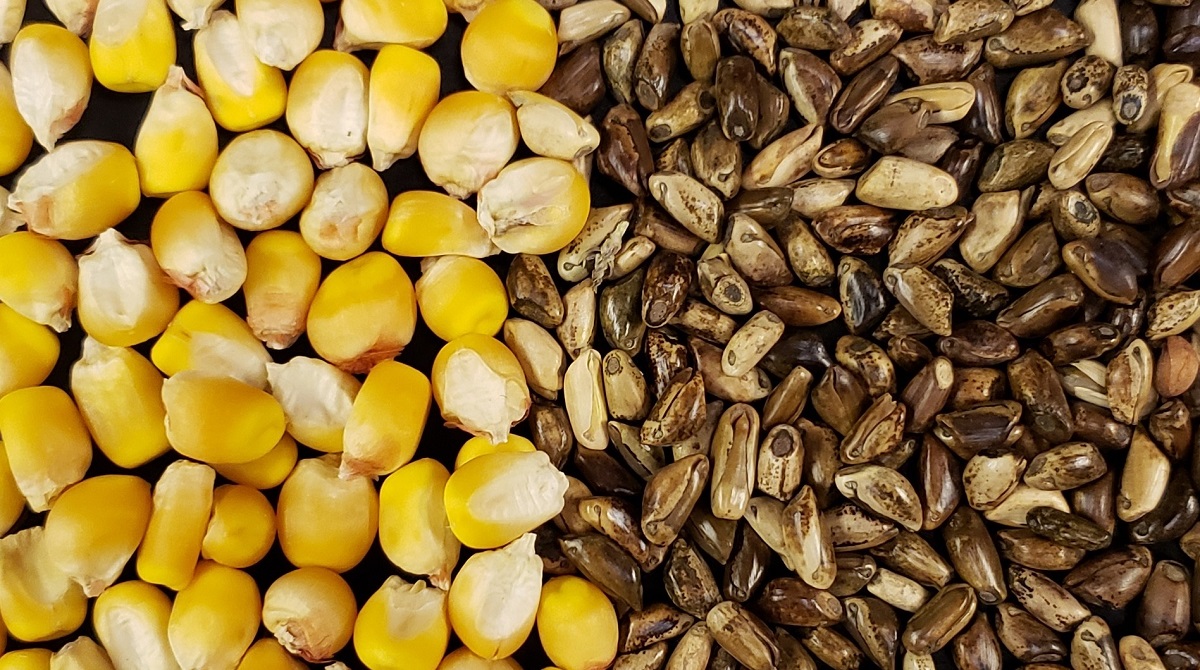
New Tool Helps Strip Down Corn Ancestor's Traits for Research Exploration
February 9, 2022| |
Using a new tool developed by scientists from Iowa State University, researchers will now be able to identify traits like disease resistance and stress resistance in the corn's wild ancestor and use them to further advance modern corn breeding selection.
The tool harnesses the latest techniques to produce fertile transgenic teosinte plants for the first time. Teosinte is a wild grassy plant that was domesticated over the course of a thousand years ago to develop into the modern corn. The tool was discovered when the scientists were able to identify a robust callus induction and regeneration protocol using whorl segments of seedlings grown from mature seeds. With it, they were able to produce callus tissue with cells that have not yet developed into variant cells.
These callus cells can be used to explore the original traits that were previously lost along the way as the modern corn was domesticated over the years. Identifying these lost traits can help researchers harness the genetic diversity of corn and may be helpful in breeding better corn varieties with improved growing and flowering times. Furthermore, new DNA can be introduced into the callus cells using transgenic technology. Using gene editing tools, researchers can use the callus cells to study different genes by switching them off and further exploring the traits found in the corn genome.
Read more about this exciting development in Iowa State University's news release.
| |
You might also like:
- Researchers Use Wild Relatives to Breed Eggplants with New and Improved Traits
- Scientists Discover Ancient Melon Key in Breeding Disease-Resistant Watermelons
- Study Puts End to Intense Scientific Debate on Peanut's Origin
Biotech Updates is a weekly newsletter of ISAAA, a not-for-profit organization. It is distributed for free to over 22,000 subscribers worldwide to inform them about the key developments in biosciences, especially in biotechnology. Your support will help us in our mission to feed the world with knowledge. You can help by donating as little as $10.
-
See more articles:
-
News from Around the World
- Global Food Prices Increase in January
- Oxitec to Conduct Mosquito Technology Tests in the US in 2022
- UC Davis Team Identifies Wheat Gene that Increases Yield
- Study Pinpoints Gene Vital for Rice Grain Development
- Researchers Reveal Mechanisms in Air Channels Formation in Submerged Plants
- PH Agri Secretary: Biotechnology a Powerful Tool of Science to Feed the Future
- Adoption of GM Crops Can Help Fight Climate Change -Study
- Study Reveals Friendly™ Fall Armyworm Reduces Population; Provides Long-Term Protection
-
Research Highlights
- Study Shows SPL9 Mediates Freezing Tolerance in Plants
- New Tool Helps Strip Down Corn Ancestor's Traits for Research Exploration
- GM Phytase Corn Found to Promote Digestion of Amino Acids in Pigs
-
Plant
- Report Tackles Why the UK Should Embrace Biotech and Gene Editing
-
Read the latest: - Biotech Updates (December 17, 2025)
- Gene Editing Supplement (December 17, 2025)
- Gene Drive Supplement (February 22, 2023)
-
Subscribe to BU: - Share
- Tweet

